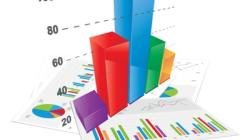For quite some time CFOs and the finance community have been talking about transforming the finance function, becoming better business partners and focusing on the value-add, strategic activities. At the core of that transformation is FP&A, as activities like business planning, business unit strategy, investment allocation and predictive analytics become important to fulfil finance’s new, expanded position within the company.
A couple of weeks ago I joined the meeting of the Amsterdam FP&A Board where we discussed the subject of the FP&A analytical transformation. In the course of the meeting the participants mentioned their current main concerns, some of which such as Data ownership, Data quality, and Business Glossary (‘Speaking the same language’). This surprised me.
This article addresses technology in FP&A. In his book "THE INNOVATORS" Walter Isaacson describes two ways of utilizing technology. One way is artificial intelligence, machines thinking on their own. Another way is augmented intelligence, people using machines to help organize information.
They say a picture is worth a thousand words… “Telling the story” is one of the most important tasks facing the FP&A professional, and data visualization is a powerful tool to reveal this story. Data visualisation is vital for FP&A analytics: it can help to reveal hidden trends and patterns, to filter out the noise and to generate valuable business insights. In other words, there are two types of data visualisation:
Nearly every financial planning and analysis professional understands the need to embrace big data and analytics. But how can firms move beyond basics to advanced analytics? That challenge was on every attendee’s mind at the recent FP&A advisory board meeting in London. There, FP&A and business intelligence professionals gathered to discuss the state of business intelligence (BI) and FP&A analytics with Nigel Geary, BI specialist at power utility British Gas.
Pagination
Subscribe to
FP&A Trends Digest

We will regularly update you on the latest trends and developments in FP&A. Take the opportunity to have articles written by finance thought leaders delivered directly to your inbox; watch compelling webinars; connect with like-minded professionals; and become a part of our global community.





